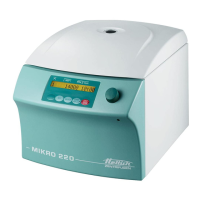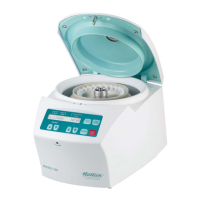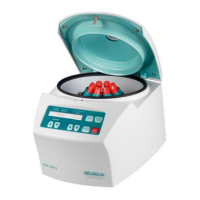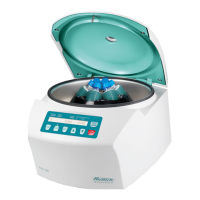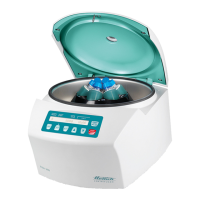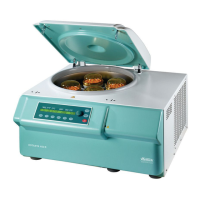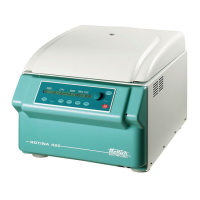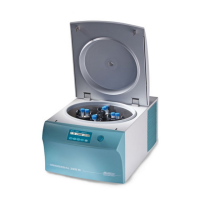CP : control panel, FC : frequency converter, SB : supply board, CB : cooling board, CC : control cable, LL : lid locking, BC : braking chopper,
BR : brake resistor, MR : mains reset, EC : error cause, ES : error consequence, ER : error remedy, M : measurements, ECR : error-code reset
9/51
• The CP issues the following via the serial interface:
− Speed
− Starting and braking levels
− Control commands START, BRAKE, STOP
• State display by LED´s:
In standby mode the green LED is on
In running mode the green LED is on
In fault mode the green LED flashes
If the FC processor detects a fault, it shuts down itself automatically and triggers the
fault circuit (FC-ERROR). The CP then interrogates the type of fault via the serial
interface.
2.5. Special features
• Multiprocessor concept:
Although one microprocessor will fail, the other one will continue to monitor its
assigned area.
If the CP fails, the drive will be shut down automatically by the FC when no inter-
rogations have been received via the interface for more than 30 seconds.
• Interface concept:
Transmission of data is monitored by an extra check sum.
• Hardware concept:
All switches with a safety relevant function are of the NC-contact type, which
means that loose contacts and open-circuit faults can also be detected.
2.6. Motor / Tacho system
• The motor is a 3 phase asynchronous motor with 2 pairs of poles.
• A speed sensor (speedometer) attached to the motor receives the following from the
transmitter attached to the rotor,
− rotor code information (see section 10) and
− speed data (6 pulses per revolution)
• The ACTUAL speed is monitored and controlled via the CP
− Double safety:
The FC is also programmed that no value of speed
in excess of the maximum permitted rotor speed
can be selected. The FC monitors the speed and
switches off at excess speed with error code
“ERROR 84”.
• Rotor standstill is monitored via the CP.
− The lid can only be opened when the CP has detected standstill.

